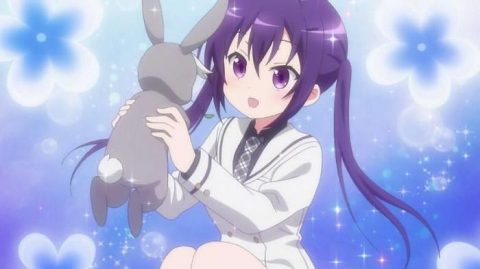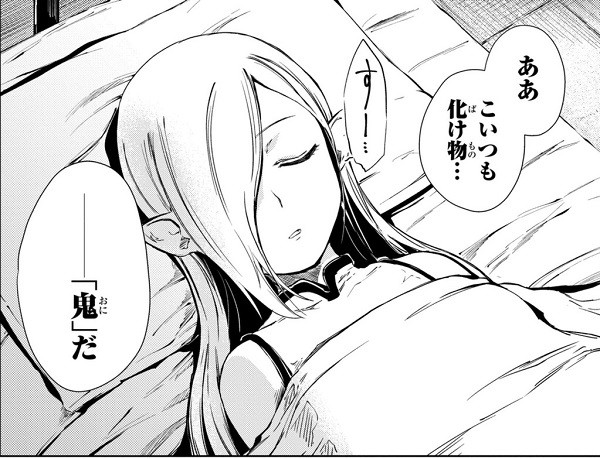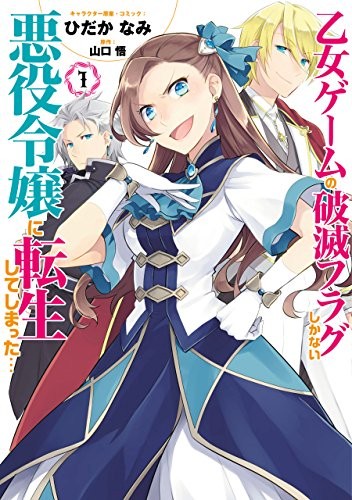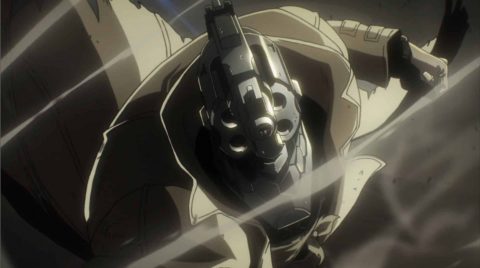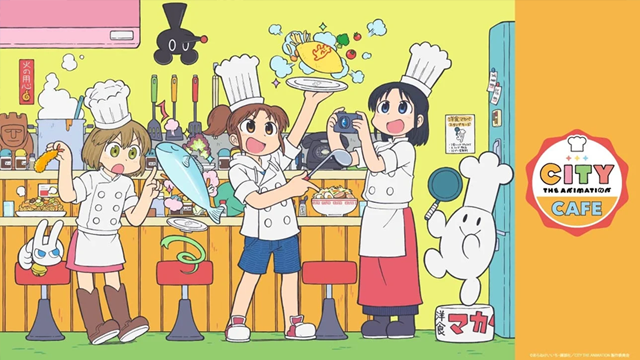
The new anime “CITY THE ANIMATION” is a youth comedy that adapts the original manga “CITY” by Keiichi Arawi, the manga artist known for Nichijou. The TV anime began airing in July 2025, and it’s making big waves as Kyoto Animation’s first completely new project in about six years. This series portrays the everyday lives of slightly eccentric yet somehow lovable people living in an otherwise ordinary city, with fast-paced gags and heartwarming storytelling. The official tagline describes it as “‘Fun’ is the password”, promising “laughs, love, and even a few tears,” so it’s not only funny but also secretly touching. In this article, we’ll thoroughly break down the charm and highlights of “CITY THE ANIMATION.” Whether you’re a fan of the original manga or new to the series, once you discover its appeal, you’ll surely want to watch it!
What is “CITY THE ANIMATION”?
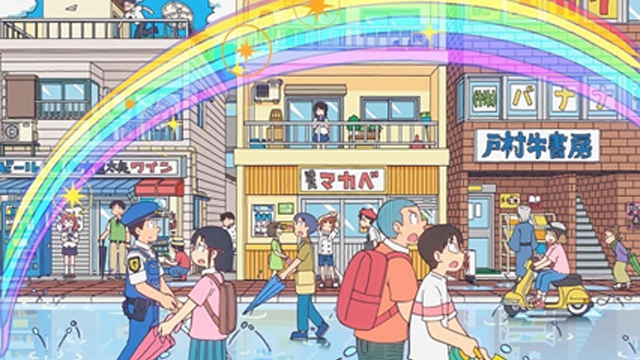
“CITY THE ANIMATION” is, at its core, an adaptation of the surreal slice-of-life gag manga “CITY”, created by Keiichi Arawi and serialized in Kodansha’s magazine Morning starting in 2016. (Arawi-sensei is also famous for the manga Nichijou.) Dubbed a “girls-run comedy” following in the lineage of Nichijou, it centers on a penniless college girl Midori Nagumo and the wild daily antics of the quirky characters surrounding her. The original manga has 14 volumes out so far, and its serialization even resumed in late 2024 to coincide with the anime adaptation’s announcement.
The anime “CITY THE ANIMATION” is produced by Kyoto Animation (KyoAni). It’s the studio’s first new TV series in about six years, and the fact that it’s a collaboration of KyoAni with the creator of Nichijou (Keiichi Arawi) had fans extremely excited. As the catchphrase hints – “This town is no ordinary town” – the story is structured in an omnibus style, depicting one bizarre, unpredictable happening after another lurking behind seemingly mundane daily life. The plot revolves around the trio of college students: Midori Nagumo, her junior Niikura, and the enigmatic Wako Izumi, while various unforeseeable episodes unfold involving the city’s residents. Characteristic of the series, it delivers laugh after laugh yet carries a gentle message and human warmth that leave your heart feeling toasty by the end. It’s a fresh kind of slice-of-life anime that warms you from the inside out.
The Setting and Main Characters
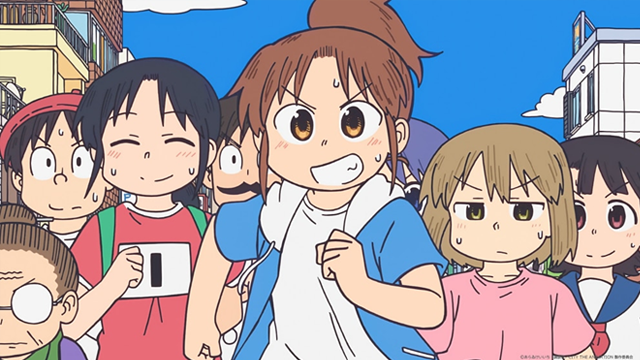
“CITY THE ANIMATION” features a large cast of charming characters. The slapstick antics unfolding in the titular city are driven by the personalities of the characters – especially the protagonist Nagumo and those around her. Here we’ll introduce the main characters, along with their relationships and highlights. The way these overly unique residents interact, and the unexpected “chemical reactions” that result, are a big part of the show’s appeal.
Midori Nagumo: The Free-Spirited Troublemaker
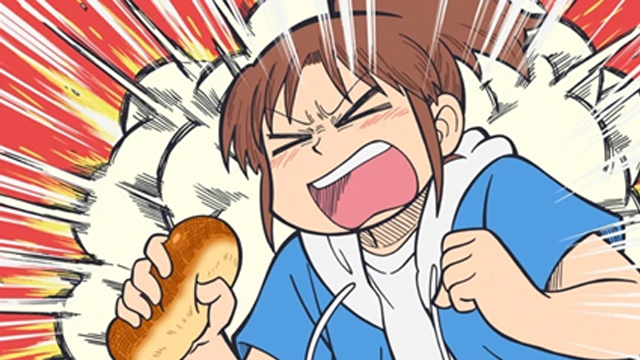
Midori Nagumo is the protagonist of the series, often the spark that sets off the story’s chaos. She’s a 20-year-old second-year student in the Mont Blanc Department at Mont Blanc University. With a brash, boyish, and carefree personality, Nagumo loves fun and mischievous schemes, but she’s terrible at anything tedious or requiring steady effort – the textbook happy-go-lucky type. A self-professed gambling fan (her hobbies are horse racing and mahjong), she’s perpetually broke and obsessively fixated on money. As a result, she constantly dodges her overdue rent, getting chased around by her landlady (aka “Obaba”), and causes unusual commotions all over town as part of her daily routine.
Nagumo’s appeal lies in her outrageous energy and irresistible charm. In high school she was something of a legend, with exceptional athleticism that let her defeat the star players of every sports club. Now in college, however, she lives a lazy, unmotivated life and is always hungry—often mooching food off her friends. Even so, deep down she’s pure-hearted and cares about her pals. She actually has some cute weaknesses too: for example, she’s a scaredy-cat who’s terrified of ghosts. At one point she starts a part-time job at the Western-style diner “Makabe”, but she’s so free-spirited that she shows up late every shift, much to the owner’s dismay. Yet whenever Nagumo is around, things somehow become lively—her very presence brightens the mood. In short, she’s the troublemaker with boundless impulsive energy, but also a natural mood-maker that nobody can truly dislike.
Niikura & Wako: A Well-Coordinated Duo
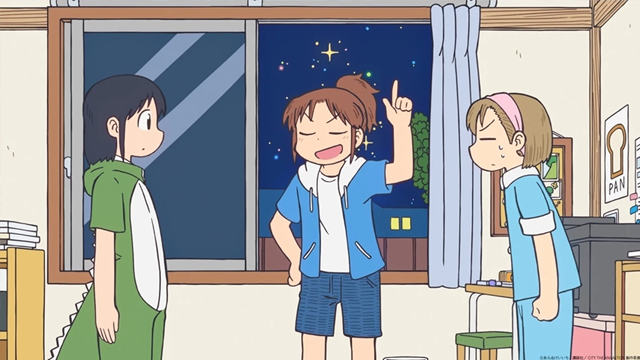
Niikura and Wako Izumi start off as Nagumo’s neighbors and quickly become her close friends, forming a trio of college girls who often hang out together. Niikura is an 18-year-old freshman at Mont Blanc University, a year below Nagumo. Despite being younger, she’s one of the few people who can go toe-to-toe with Nagumo’s antics and call her out – essentially the sensible “straight man” (tsukkomi) of the group. Niikura admired Nagumo’s bold exploits back in high school, and by a twist of fate they met and ended up living in the same apartment building (Mokumesei Apartments). She’s pretty responsible by nature, though she has a slightly scheming side as well. Even when Nagumo tries to borrow money yet again, Niikura can’t help but reluctantly give in and look after her – she has a bit of a caring busybody streak. It’s a running gag that Niikura carries a handmade paper fan (a harisen) and will smack Nagumo with it in a sharp retort; she’s the perfect partner (and foil) to Nagumo’s slapstick escapades. Niikura herself dreams of becoming a photographer, and she’s diligent about carrying her camera everywhere, showing that she’s a hard worker at heart.
On the other hand, Wako Izumi is a 20-year-old sophomore (the same age as Nagumo). Unlike the others, Wako is utterly laid-back and airheaded – the very definition of a whimsical “mysterious girl” character. For some bizarre reason, she took up residence in the closet of Niikura’s apartment, and through that odd circumstance she joined Nagumo and Niikura to complete their three-girl team. Wako is constantly smiling cheerfully, and no matter how frantic things get around her, she stays calm and even manages to enjoy the chaos. She worships a strange black mouse-like plush doll as her “God”, and she’s always indulging in her own quirky hobbies (like collecting random knickknacks or drawing bizarre design sketches). Her actions are totally unpredictable, yet at her core she’s very pure and optimistic. In fact, her outlook that “there’s fun to be found in everything” truly embodies the theme of CITY. Even when Nagumo and Niikura are freaking out, Wako will just giggle innocently and find amusement in their shenanigans, watching over them with a carefree grin – a demeanor so relaxed that it actually makes her a surprisingly reassuring presence.
It’s safe to say the banter between Nagumo, Niikura, and Wako is one of the biggest highlights of the series. The unruly, joke-cracking Nagumo; Niikura with her razor-sharp comebacks; and Wako who goes at her own pace while smiling and lightening the mood – this three-in-one combo creates an absolutely superb comedic rhythm. Their conversations are often hilariously out-of-sync or full of miscommunications due to their differing personalities and energy levels, producing a uniquely “laid-back yet laugh-out-loud” atmosphere. The voice actors have fantastic chemistry as well, and just watching the trio’s everyday interactions will have you chuckling nonstop.
Is the Whole City a Character? The Quirky Supporting Cast
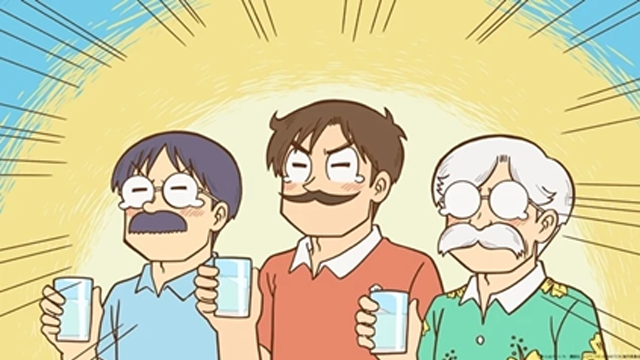
The supporting characters who appear in “CITY THE ANIMATION” are all extremely eccentric and memorable. In fact, the city itself feels alive thanks to its vibrant residents – as if the entire town is one big character. A prime example is the landlady of Nagumo’s run-down wooden apartment “Mokumesei-sō,” an old woman known only as Obaba (Granny). She’s an absolute powerhouse – strong enough to pin down Nagumo (who’s young enough to be her granddaughter) with her bare hands. Obaba lives for chasing down Nagumo to collect the rent, showing off what might be the ultimate strength in the series. No matter how much Nagumo tries to flee, Obaba will run along the walls to catch her! Their high-speed chase sequences through the streets are ridiculously funny and have become an iconic running gag of the show.
Nagumo’s part-time workplace, the Western restaurant “Makabe,” is run by the manager Tsurubishi Makabe, an older gentleman with a craftsman’s pride but also a goofy, upbeat attitude. The Makabe family centered around him is delightfully unique as well. His eldest son, Tatewaku, is a high schooler on the soccer team (albeit just a benchwarmer), and we see him plotting crazy schemes in the name of youthful romance to get closer to a girl he secretly likes. Tatewaku’s younger sister Matsuri is a middle schooler who, together with her best friend Eri (nicknamed “Ecchan”), randomly creates unofficial “clubs” at school and causes mischief as a troublemaker duo. Meanwhile, Tsurubishi’s father-in-law, the mysterious elderly Dr. Adatara, apparently holds a grudge against the Makabe family – he even secretly sets up surveillance cameras around the restaurant to spy on them! The Adatara family itself is huge, and every member has an over-the-top character setting that will make you laugh. (For instance, the eldest daughter is so clumsy she holds the record for breaking 72 dishes, and a pair of twin elementary-school sisters are constantly bickering with each other.) Each of these outrageous details adds to the comedy.
There are many more colorful denizens of the city. At the local free paper “Weekly CITY” magazine office, a rookie editor Todoroki is running around trying to manage the serial manga “Rakutan-kun”, while its mangaka Onikamaboko-sensei is perpetually out of ideas and in tears as deadlines loom. In the school realm, even Nagumo and Niikura’s alma mater City South High School is full of quirky individuals. The students (like Tatewaku, and Wako’s younger sister Riko Izumi, a high-school hacker girl) and even the teachers all have their little eccentricities. During the city’s big event, the “CITY Race,” participants of all ages – young and old – get mixed together in a wild free-for-all, turning the whole town upside down in a huge commotion. In short, the slapstick comedy unfolds on a city-wide scale. An ensemble drama woven by a cast of distinctive characters is exactly what makes “CITY THE ANIMATION” so appealing. There are no truly serious villains in this show; everyone, in their own way, is too endearing to hate, so you’ll never find yourself in a sour mood watching it. Each character is so deeply peculiar and charismatic that they could be the protagonist of their own story – it really drives home the concept from the key visual that “every single character is a protagonist.” Half the fun of this series is picking out your favorite side character from this eclectic bunch!
Memorable Quotes & Gag Scenes
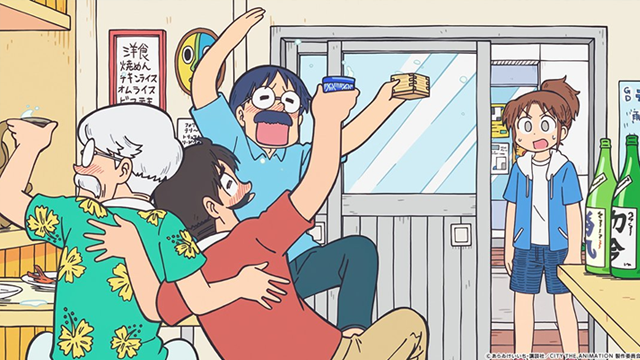
The laugh-out-loud gag scenes and the many quotable lines are major highlights of “CITY THE ANIMATION.” Throughout the everyday dialogue, characters will suddenly drop absurd one-liners or utter hilariously offbeat remarks overflowing with personality. There are so many witty or goofy quotes that you could practically compile a book of them – as you’d expect from a pure gag manga. In this section, we’ll spotlight a few examples and explain the context and charm behind them.
The Context Behind Those Laugh-Out-Loud Lines
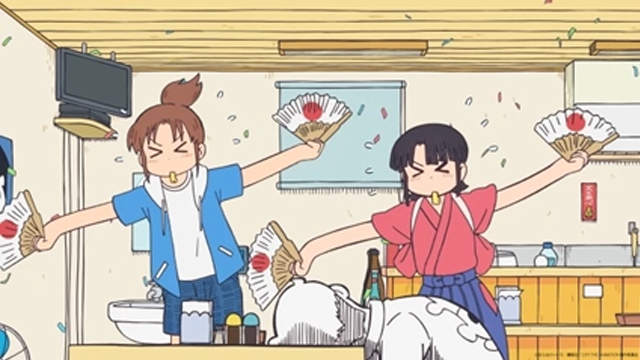
One emblematic comedic moment in the series is when Midori Nagumo, desperately fleeing from her rent collector, cries out in terror: “Eeeek—please have mercy, Obaba-sama!” This pitiful plea for forgiveness has become one of the show’s signature gags. Normally Nagumo is brash and thick-skinned, but the moment her opponent is Obaba (the fearsome landlady), she turns into a whimpering child – the role reversal is just comical. The scene usually escalates into a giant uproar that even drags in the surrounding residents as witnesses to Nagumo’s humiliation, which makes it even funnier. This single frantic line also speaks volumes about the power dynamic between the characters. To Nagumo, Obaba is an absolute nemesis she can’t possibly defy, and that relationship is perfectly condensed into this one panicked scream.
Another standout line is Wako’s proclamation: “There’s fun packed into everything.” Wako has this pure, carefree ability to find something amusing in absolutely anything, and this quote carries a surprisingly deep meaning that ties into the series’ overall theme. For example, even if Nagumo and Niikura are getting into a petty argument over nothing, you’ll see Wako beside them just bursting into laughter, “Ahahaha!” Watching her, people around can only shake their heads, thinking, “This girl truly finds the entire world fun…” Her approach – never starting from sarcasm or negativity – comes full circle to feel incredibly sincere and positive. As viewers, her words remind us that “if you can enjoy it, you win,” no matter what crazy trouble comes your way. It’s fair to call this line one of Wako’s defining quotes, encapsulating her optimistic perspective that we can’t help but admire.
Themes and Messages Woven In

Even though “CITY THE ANIMATION” is a gag anime, it subtly weaves in underlying themes and messages. The overarching message you feel through the series is a positive one: “Find the little happiness and humor hidden in everyday life.” The lives of Nagumo and her friends are, to put it mildly, far from smooth sailing – they face constant money troubles, failures, and chaotic incidents. Yet they never get discouraged and instead tackle each day with laughter and cheer. No matter how crazy the shenanigans, by laughing together with friends they manage to get through it all, and in fact their days are all the more fulfilling and free from boredom because of it.
Wako’s presence is symbolic of this mindset: “Every single thing in this world is filled with fun,” and “If you have enough leeway to laugh things off, life will surely be richer.” These positive ideas form the bedrock of the show. The bonds between people are also depicted with care – as you can see in the relationship among Nagumo, Niikura, and Wako. What started as a weird connection born from borrowing and lending money gradually evolves into genuine friendship as they help each other out and share laughs together. Initially Nagumo might have been motivated by selfish reasons, but over time we see her willing to stick her neck out for her companions. Niikura too just can’t abandon Nagumo and ends up looking after her. Their bond deepening little by little provides a few surprisingly poignant moments that might bring a tear to your eye. In this way, amidst all the humor, the series offers real insights and a shift in perspective – “CITY THE ANIMATION” has a heart and depth that might catch you off guard.
Differences from the Original Manga & The Anime’s Unique Appeal
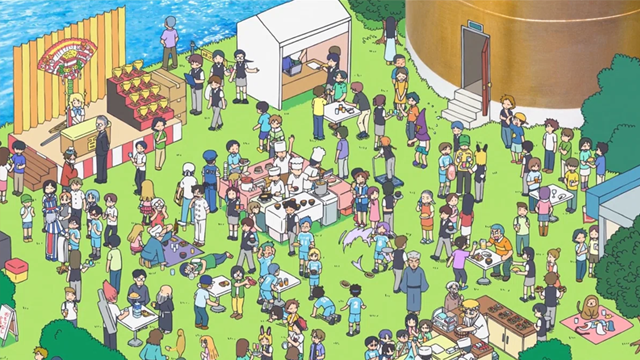
Whenever an anime adaptation comes out, fans of the original manga can’t help but wonder: “What’s different from the source material?” “CITY THE ANIMATION” stays true to the spirit of the manga and makes full use of its charm, while also delighting viewers with creative touches that only an anime can provide. Let’s explore the anime’s appeal by comparing it with the manga.
How Are the Manga’s Unique Gags Brought to Life?
Arawi Keiichi’s manga has a very distinct style of humor, using panel layouts, comedic timing (the beats of silence), and quirky sound effects on the page to get laughs. One key challenge for the anime was how to recreate those manga-only gag techniques. As mentioned earlier, Kyoto Animation approached this with the philosophy of “making the manga move as-is.” They’ve masterfully translated the comic timing and rhythm from the panels into animation. For example, the pregnant pauses right as a character is about to take a pratfall, or the awkward silence after a surreal punchline – those comedic beats that made you laugh in the manga are preserved so you can feel them in the anime too. The staff respected the manga’s every panel, yet they also enhance some scenes beyond the original by adding little background motions or extra sound effects, turning certain jokes even funnier than on the page. Fans of the manga will be delighted at how faithfully (and cleverly) these moments are handled.
Another aspect not to be overlooked is how giving the characters voices has doubled their charm. Nagumo’s boisterous guffaws, Niikura’s sharp-edged retorts, Wako’s mellow, unhurried way of talking – the voice actors’ performances make each character feel even more alive. When reading the manga, you could only imagine the tone and delivery in your head; in the anime, professional voice acting brings those rapid-fire exchanges to life with tons of energy. This is one of the joys of seeing a gag manga adapted – the timing and intensity of the voice acting directly amplify the humor. Thanks to a highly skilled cast, the comedic punch of the dialogue is even sharper in the anime.
On top of that, the anime is sprinkled with visual gags that are only possible in motion. You might catch playful text written on a poster in the background, or notice that a random extra’s movements secretly parody something – the creators have packed details into every corner. This means there’s fun in re-watching episodes to spot jokes you missed the first time around. Discovering these little anime-original easter eggs that weren’t in the manga will make even long-time readers grin in surprise. In this way, the anime leverages the strengths of animation – while honoring what made the manga great – resulting in a product that double dips in enjoyment for both newcomers and fans of the source material.
Key Points for Fans of Keiichi Arawi

If you’re a fan of Keiichi Arawi, there are several special aspects of “CITY THE ANIMATION” you’ll want to pay attention to. First, there are the subtle connections to the author’s past works. The promotional band on volume 1 of the CITY manga famously featured a baton-passing illustration from the protagonist of Nichijou to the protagonist of CITY. In the anime, Episode 2 includes a character, “Daisuke Naganohara” (a manga artist within the story), which slyly hints at a connection to Nichijou’s Mio Naganohara – this little Easter egg became a talking point among fans. These crossover-style touches are never explicitly stated, but observant viewers familiar with Arawi’s work will catch them and smile. There’s a playful notion that all of Arawi’s worlds might be connected, and it’s fun for fans to hunt for these hints.
Next, from a fan’s perspective it’s worth noting the love that director Tatsuya Ishihara and the Kyoto Animation staff have for the original. Ishihara (the series director) actually worked on Nichijou, and character designer Tamami Tokuyama has gone to great lengths to faithfully recreate Arawi’s signature art style in animation. Even on the sound side, audio director Youta Tsuruoka, who also handled Nichijou, is involved. You can really sense the passion of the team in their mission to “respect and carefully bring Arawi Keiichi’s work to life on screen.” In fact, the production staff studied the original manga’s art down to the finest details – from background art to animation style – approaching the project with a deep respect for Arawi’s unique world. This collaboration has resulted in exceptionally high quality, which brings both joy and reassurance to us fans.
Furthermore, be on the lookout for new illustrations and special projects that were created thanks to the anime adaptation. On KyoAni’s official website and social media, they released countdown illustrations leading up to the broadcast, as well as seasonal special artworks (for Valentine’s Day, summer greetings, New Year’s, etc.). There was even a buzzworthy second key visual featuring chibi-style mini characters, hand-drawn by character designer Tamami Tokuyama and art director Shiori Yamasaki. These are delightful bonus treats born from the anime that any fan wouldn’t want to miss. The ending sequence of the show is also a must-see: it’s crafted with unique visual storytelling that feels like the manga panels brought to life, offering glimpses of the characters’ everyday moments. It’s an easter egg-filled ending that truly tickles a fan’s heart.
Overall, what fans of the original should really take note of in the anime is “how the Arawi world has been elevated into animation.” Thanks to KyoAni’s highly faithful adaptation and playful creative touches, Keiichi Arawi’s charm has expanded even further in this format. That means even long-time fans will be able to enjoy the series with a fresh feeling, appreciating the new dimensions added by the animated medium.
Conclusion: The Fresh Daily Life & Laughter Brought by “CITY THE ANIMATION”

“CITY THE ANIMATION” is a work that brilliantly translates Keiichi Arawi’s unique brand of “laughable everyday life” into animation, courtesy of Kyoto Animation. It’s set around the daily lives of college girls, yet it humorously depicts the extraordinary events lurking within the ordinary – you could say it’s the culmination of all things great about slice-of-life comedy. From wildly exaggerated slapstick gags to little chuckle-inducing asides, the show is packed with every kind of humor. And somehow, it simultaneously carries a gentle, heartwarming atmosphere and the glitter of youth. By the time an episode ends, you’ll find yourself feeling recharged and upbeat.
In particular, the loose, easygoing comedic rhythm of Nagumo, Niikura, and Wako’s interactions, the multi-layered structure where the “city itself” bustles like a character, and the fusion of KyoAni’s high-quality animation and direction all come together to deliver a fresh kind of laughter distinct from Nichijou. You’ll be drawn into a surreal yet oddly relatable world, and before you know it you’ll have become a fan of the residents of CITY.
Currently airing, each episode of this series brings about some kind of “incident” (for better or worse!), yet the tone remains fundamentally bright and fun, so it’s easy to enjoy and can serve as a little dose of daily comfort. If you’re intrigued, by all means give it a watch and feel its charm for yourself. With “fun” as the key word, this anime is like a bit of magic that adds a splash of humor and discovery to your everyday life. If you’re seeking a new show to liven up your routine, “CITY THE ANIMATION” will surely put a smile on your face. Step into the world of CITY, and enjoy spending time with its delightful residents to your heart’s content!

